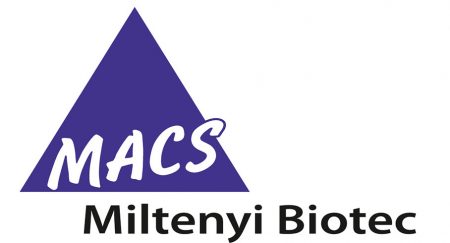Maximising data standardisation and reproducability from flow cytometry
Cell & Gene Therapy Insights 2019; 5(Suppl. 6), 1075-1080
10.18609/cgti.2019.115
Q Can you frame for us the key challenges which are creating the current QC bottleneck in cell & gene therapy manufacture at clinical and commercial scales?
AS: This is indeed an emerging topic in this area. In order to make cellular therapies a reality, the focus in the last few years has been primarily on automation of the production processes themselves. In my view, this milestone has now been reached – the next issue to tackle is clearly driving efficient product quality control steps.
Quality control of complex biological products, like CAR T cells, can be a complicated process with a lot of variables to be considered. Today, many QC processes are highly dependent on expert knowledge – on having very highly trained staff making correct decisions, which is not an ideal scenario. And some of the instruments and techniques used in these workflows are difficult to operate and can potentially produce divergent data, if not adjusted properly.
Additionally, the actual methods used often require detailed quality control steps themselves, within the overall product quality control process. This can be a huge problem as it introduces a lot of variation to the system and, if the detection methods used are not precise, one has to be even more precise with the production process itself to guarantee a high-quality product. In my opinion, production processes for biological products such as CAR T cell therapies are already quite complex enough!
On a different note, the lack of digitalisation within QC workflows is a major issue. Paper-based workflows are still common, with people having to employ a four- or six-eye principle. This makes the whole workflow both difficult to upscale and prone to human error. Some numbers have to be transferred from paper to an Excel sheet, and then back to a LIM system. That is not a recipe for efficiency.
Q What is your view on standardising to assist with this issue?
AS: For optimal QC, I need to be sure that variations measured come from my cell product and not from the methods used. So, for standardisation of any kind to occur, I must fundamentally ensure that I am comparing apples to apples, and not apples to oranges.
For example, input materials, such as antibodies used for detecting my CAR T cells should have a high degree of lot-to-lot consistency.
In addition, instruments should always create the same results when measuring identical input material. But while this sounds trivial, it is often not the case.
Q Can you go deeper on the particular limitations of current tools that contribute to this situation? How is Miltenyi Biotec seeking to address these limitations?
AS: Flow cytometry in general is a very powerful tool, which is often used in QC processes. However, it has faced – and continues to face – previously mentioned challenges. In the past, flow cytometry was an expert tool only, highly dependent on trained operators. It comes with its own quality control steps that need to be carefully monitored in order to ensure consistency in results.
High-quality reagents have always been crucial to the success of flow cytometry. Labelled hybridoma-derived antibodies have been the tool of choice in the past, but this technology faces limitations, which if not addressed, can lead to big problems. With hybridoma antibodies, operators need to use dedicated isotype controls and in the case of hematopoietic cells, such as CAR T cells, use Fc receptor blocking agents to prevent unspecific backbone binding of the antibody itself.
However, we think that this is no longer necessary nor is it state-of-the-art. These days, one should use recombinant antibody technology, such as REAfinity™ Antibodies. These are genetically engineered so that they do not require Fc receptor blocking. They also share a single isotype, minimising additional quality control steps within the already complex overall QC process. It is also important to consider the fact that recombinant antibodies naturally offer an enormous degree of lot-to-lot consistency.
The other limitation I mentioned earlier is us humans ourselves. I think the beauty of humanity is that we are all different, but that unfortunately means that we also introduce a lot of variation to our systems – both to the simple ones and those that are more complex, such as data analysis. We at Miltenyi Biotec believe that algorithm-based or algorithm-supported data analysis will be key to both throughput and data quality for QC steps.
Q Regarding flow cytometry, deficiencies in the reproducibility of data when transitioning to clinical production have been cited as a particular issue of late – can you firstly explain why this is a problem for the CAR T cell therapy in particular?
AS: Studies clearly demonstrate an enormous amount of irreproducibility in preclinical work. For example, one study from 2015 showed that over 28 billion US dollars are wasted in preclinical R&D every year in the US alone due to this issue. Strikingly, this study also revealed that the majority of irreproducibility is introduced by biological reagents, other raw materials such as antibodies, data analysis, and reporting.
In flow cytometry, a lot of data variability is introduced by reagents, by differences in instrumentation, and by differences in analysis. Every operator tends to analyse the same sample in a slightly different way.
This represents a problem for CAR T cell therapies in particular for a couple of reasons. Firstly, the fact that it is such a flourishing new field, with only two products on the market to date, means that there is still a lot of research coming through the R&D pipeline. If the situation of irreproducible data in general (whether data generated by flow cytometry or other tests) does not improve dramatically, a lot of money will go down the drain. And more importantly, a lot of potential new drugs that could save human lives will not make it to the market.
The second area that raises concern is the production environment. Once a cell therapy product has reached the market, irreproducibility is even more of a nightmare and this is especially the case with decentralised manufacturing. You have to ensure that you can produce the same product every time, but you also have to put a stable and standardised QC process in place to make sure of it. Because if you do not, the variation introduced by QC processes will limit the performance of the entire system. You will risk losing cell material in what is often a very time pressured situation for both product and patient.
Every time you introduce variation to the system on the QC side, you have to make sure that the production side is stable enough to cover for it. This is why it is so very important for the CAR T cell therapy field as a whole to now focus on QC process standardisation and minimising variation.
Q What for you are the key considerations and solutions on the technical level (eg. relating to calibration and/or flexibility of the flow cytometer)?
AS: Historically, it has been common practice to calibrate balances for weight purposes. While this sounds trivial, flow cytometers have not been broadly calibrated to defined standards in the past. The consequence of this is that different individual instruments, even the same device types located next to each other in the same room, can produce slightly different results. They therefore have to be treated as individuals, which I would imagine is a nightmare for any standardised production environment. It adds a new and unwanted layer of complexity, if the operator has to think about whether to use machine ‘A’ or machine ‘B’, and how they might need to treat these machines differently.
We do not want to measure differences between instruments, we want to measure our cellular product. Therefore, I would consider looking for instruments that can be calibrated and are capable of doing multi-instrument alignments, such as the MACSQuant® Analyzer flow cytometers. These can be calibrated to standard materials and will produce the same results without adapting the settings.
This delivers two major benefits. Firstly, it standardises the data. But even more importantly, they are very easy to use, and individual operators do not have to adjust the settings on each individual machine. This minimises the burden of requiring very highly trained, expert staff, which is both very expensive for the process and ultimately makes the system more error prone.
Q Tell us more about automation, both of the tool itself and of management and integration of the data it produces – why is this so important?
AS: I come back to the point that we as humans are not perfect. We do make mistakes. That’s only natural. But besides throughput, automation gives us the chance to achieve a higher degree of reproducibility. Why not transfer this principle to data analysis?
Human data analysis always introduces variation and errors. Therefore, automation on the analysis side, and even on the instrument side with regards to aspects such as sample picking, always brings about a higher degree of standardisation. Generally, one also sees benefits in terms of speed and time efficiency.
The automotive industry is the most prominent example in terms of being able to produce good quality products in a standardised, fast, and efficient fashion, while bringing costs down for the patient. I really do think that it is now time for us to start thinking about automating the entire QC process.
Q Can you summarise for us the keys to ensuring a reproducible process through scale-up for a CAR T cell therapy or related cell therapy product, as you see them?
AS: In summary, I would highlight three things:
Always prioritise using quality reagents. In flow cytometry, think about using recombinant antibodies, whether REAfinity™ Antibodies from us or something different. They will be the tool of choice for this workflow moving forward.
Think about employing instruments that are capable of multi-instrument alignment, or at least, think about standardisation methods to compare your tools and instruments with each other. If you do not, you will fail during the scale-up process.
Consider introducing algorithm-based or algorithm-supported data analysis to reduce and minimise human-derived variation in your workflow. Even seemingly simple, trivial steps, such as using standardised analysis templates so that all reported data always looks the same, can help a great deal.
Q What do you see on the horizon for flow cytometry tools as applied in this particular field?
AS: For me, the next step is integrated systems that can talk to each other and handle complete workflows in a semi-automated fashion.
The machines will transfer data values to the LIM system, completely automatically, and the LIM system will talk to the different production machines. No human intervention will be required anymore: the human activity in this vision will be limited to checking the data and controlling the machines. In other words, the entire production process, including the major QC steps, will be completely automated with some decision gates for a highly trained human operator to provide authorisation.
This is what I envision for the future in order to bring affordable cellular therapy products to a large patient population in a cost-efficient manner.
Affiliations
Andrée Salz
Group Leader and Product Manager,
Flow Cytometry Software,
Kits & Custom Business
Miltenyi Biotec GmbH, Germany.
This work is licensed under a Creative Commons Attribution- NonCommercial – NoDerivatives 4.0 International License.



